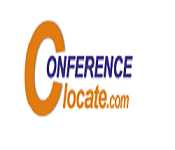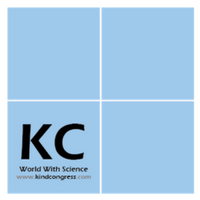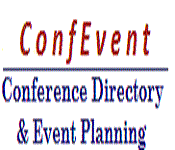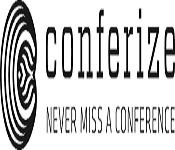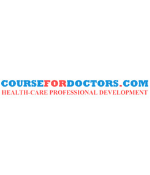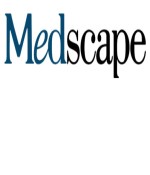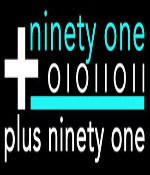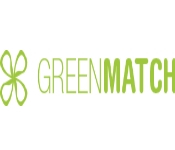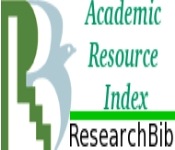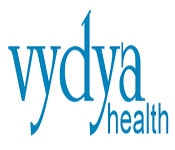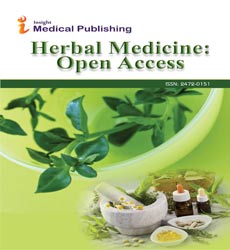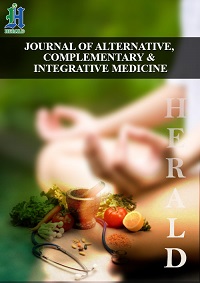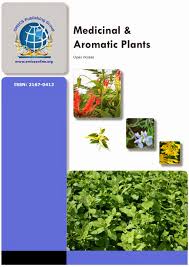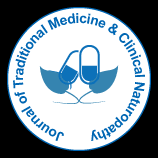Theme: Exploring New Horizons in Traditional & Complementary Medicine: A True Devotion to Natural Healing
Traditional Med Meet 2019
2nd World Congress on Traditional and Complementary Medicine
With the extremely outrageous success of previous traditional medicine meetings, we welcome you to attend the 2nd World Congress on “Traditional and Complementary Medicine” to be held on June 20-21, 2019 | Dubai, UAE.
Traditional Med Meet 2019 goals to assemble main educational specialists, analysts, scientists, traditional and complementary medicine practitioners, herbal medicine doctors, acupuncturists and research college students to share valuable review and study related to the field of Traditional and Complementary Medicines and its subfields as well.
We invite you all to the Traditional Medicine Conference 2019 as it is a platform to have open discussions, knowledge sharing and interactive sessions with field experts.
Traditional Med Meet 2019 includes the convention meeting which consists of discussion and workshops, keynote speeches, absolute talks, poster classes and the panel session on cutting-edge research traits within the field of Traditional and Complementary medicine.
This meet suspects many representatives from all around the world who would address as keynotes and oral shows by means of the eminent audio system and observe presentations by means of understudies, opportunity medicinal drug Exhibitions and delegates everywhere in the globe with the intention to make a level for worldwide advancement of sheltered and viable commonplace remedies. It offers international structures management and possibilities to join efforts with companies and agencies. Herbal Medicine, Acupuncture, Holistic Medicine, Yoga, Ayurveda, Chinese, Korean, Japnese, Arabian, Alternative, Integrative, Folk, Traditional and Complementary Medicine, Siddha, Unani, Quantum Medicine, Phytochemistry, Sports Medicine, Chiropractic, Osteopathic and many others will be discussed. Traditional and Complementary medicine additionally organizes global scientific occasions annually the world over, wherein expertise switch takes place through roundtable meetings, panel discussions, poster presentations, global workshops, global symposiums & international class exhibitions. Traditional and Complementary medicine host presentations from eminent specialists in the applicable fields.
Benefits of attending the Traditional Medicine Conference:
- Learning In a New Space
- Meet Experts & Influencers
- Lectures by active practitioners
- Novel techniques to benefit your research
- Keynote forums by Prominent Professors, Doctors, and Practitioners
- Learning about facts and statistics to better understand the market and industry
- Networking with new people within your field
- Unique opportunity to exhibit or sponsor at the Conference
- Open discussions, knowledge sharing and interactive sessions with field experts
- Poster presentations by Young Researchers
Track 1: Medicinal Plant and Products
Medicinal plants are also generally known as medicinal herbs. A huge part of the plant products is used as part of the traditional medical treatments which barely have any side effects and help in the treatment and cure. Thousands of years these medicinal plant products such as their leaves, flowers, milk, roots, stem are used for the treatment. Even now in rural areas, these practices are in great use and demand. The products derived from these medicinal plants have to be with a large number of natural healing compounds which premise the development of the latest chemical substance for the prescription drug. The plant medicine is often not tested but is used informally for centuries and have shown a great impact on a cure. However, the World Health Organization (WHO) has started coordinating a network known as the International Regulatory Cooperation for Herbal Medicines to try to improve the quality of medical products made from medicinal plants and also the claims made from them.
- Mind and Body Therapy
- Aroma Therapy
- Nutritional Medicines
- Medicinal Herbs and Fungi
- Herbal Food and Flavours
- Traditional Plant-Based Medicines
- Five Phases theory
- Tongue and pulse
Track 2: About Traditional Medicines and Disciplines
Traditional Medicine also is known as indigenous or folk medicine is the use of medicinal plants and plant products for the treatment and cure of diseases from centuries before the development of modern medicine. It is defined as the sum total of the knowledge, skills, and practices based on the theories, beliefs, and experiences indigenous to different cultures, whether explicable or not, used in the maintenance of health as well as in the prevention, diagnosis, improvement or treatment of physical and mental illness. In some countries, people still rely on traditional medicine practices for their primary health care need. Traditional medicines practices include Traditional European medicine, Traditional Chinese medicine, Traditional Korean Medicine, Traditional African Medicine, Ayurveda, Siddha Medicine, Unani, Ancient Iranian Medicine, Iranian (Persian), Islamic Medicine, Muti, and Ifá.
- Ethnobotany
- Ethnomedicine
- Medical Anthropology
- Five Phases theory
- Tongue and pulse
- Cupping
- Mythical origins
Track 3: Phytochemistry and Traditional Medicines
Phytochemistry is the branch of chemistry that deals with plants and plant products. It is the study of the phytochemicals the chemicals derived from the plants. The techniques commonly used in this field are extraction, isolation, and structural elucidation of natural products and chromatography techniques. The applications of the Phytochemistry can be for Pharmacognosy, or the discovery of new drugs, or as an aid for plant physiology studies. The importance of the vegetation in traditional medicine and the importance of the distribution of these chemical materials have been discussed with admire to the position of this vegetation in Ethnomedicine in all over the world. New technologies such as plant barcoding and principal component analysis, are being deployed in the development of strategies to provide an evidence base for the quality, safety, and efficacy of traditional medicines to improve health care.
- Pharmacognosy
- Pharmacological Activity
- Phytochemicals
- Phytochemicals with nutraceutical importance
- Antioxidant Phytochemicals
- Nutrigenomics
Track 4: Indigenous and Tribal Medicines
Tribal medicine is a part of the indigenous medicine and is used by tribal in the forest. It is the little traditional medicine or folk streams. The tribal medicine is also known as the ethnomedicine. From the ancient era the people especially the tribal have known the use of the herbs and roots for the healing purpose. There is an estimation of 25,000 plants used as the tribal medicinal plants. This empirical knowledge of tribal medicine is shared by word by mouth. Out of the 2000 drug items recorded in the Indian Materia Medica, 1800 are of plant origin. Therefore 80% of the raw materials required in the manufacture of drugs are forest-based. Therefore it can be a foundation for the development of the innovation of therapeutic drugs.
- Traditional African Medicines
- Traditional African Medicines
- Traditional Mexican Medicines
- Traditional Chinese Medicines
Track 5: Unani Medicines
Unani also was known as Yunani medicine, Unani Tibb, Arabian medicinal drug, or Islamic Remedy, is actually a Greek medicine which was considered to be traditional medicine by Persians and Arabs. It is practiced mostly in South Asia and modern central Asia. According to Unani, the management of any disease depends upon the diagnosis of the disease. Though Unani medicine was practiced by Muslim medicine men commonly known as Hakims, it is mostly based on herbal medicine, different minerals and metals like gold, silver iron, copper etc. Also depends upon indigenous mineral abstracts like snake venom, juice extracted from liver and kidneys of monkeys, goats and other cattle and birds. Plants extracts like honey, herbs, and fruits as well as flowers and seeds of medicinal plants are also used in the Unani system of medicine.
- Basic Principles of Unani Medicines
- Herbs and Healing
- Safety Considerations
- Research in Unani Medicines
- Behavioral Medicine
- The Seven Components of Unani Medicine
Track 6: Ayurveda
Ayurveda is believed to be originated in the Indian subcontinent. The main classical Ayurveda text is believed to be derived from gods to sages and to human physicians. It is 5000 years old culture which is originated from the Vedic culture. Ayurveda is now practiced globally and has got a great demand for cure and wellness. Ayurveda Recognises human beings as part of nature. It governs the three fundamental energies of our inner and outer environment that is movement, transformation, and structure. They are commonly known in Sanskrit as Vata (Wind), Pitta (Fire), and Kapha (Earth). However, in Ayurveda, it is said that these are the three forces that characterize the body and mind. Ayurveda also focuses on exercise, yoga, and meditation.
- Yoga Therapy
- Mudras in Yoga
- Chakras in Yoga
- Yoga for the Nervous System
- Yoga for Pregnancy & Aging
- Yoga for Wellness & Addiction Recovery
- Yoga Therapy
- Mudras in Yoga
- Chakras in Yoga
- Yoga for the Nervous System
- Yoga for Pregnancy & Aging
- Yoga for Wellness & Addiction Recovery
- Sanskrit and Samhita
- Padartha Vigyana (Ayurvedic philosophy)
- Rachna Sharira (Ayurveda anatomy)
- Kriya Sharira (physiology)
- Rasa Shastra Avam Bhaisajya Kalpana (Pharmaceuticals of Ayurveda)
- Dravyaguna (Pharmacology )
- Associated supportive therapies
Track 7: Homeopathy
Homeopathy treats the patient with medicines using the Law of Similar. In contrast, the law of opposite is treated by antibiotics, anti-inflammatories, anti-depressants, anti-psychotics. Homeopathic theories are based on fixed principles and do not change. In Homeopathy the homeopathic practitioner treats the whole person, believing all symptoms are interrelated and seeks to select a medicine which most closely covers them all. There is more than 4000 homeopathic medicine which has no toxic or side effects, as well they are not addictive. Homeopathic medicine is made using one product that is either plant, metal, mineral, etc. The Royal Families use homeopathic medicine and Queen Elizabeth II of England believes and uses the same for her treatment.
- Preparation and Treatment
- Proving of Homeopathic Medicines
- Active Constituents in Pills
- Preparations and treatment
- Electrohomeopathy
- Homeoprophylaxis
- Homeopathic Vaccines
Track 8: Naturopathy
A naturopath is a form of alternative and complementary medicine. It employs an array of pseudoscientific practices branded as natural, non-invasive, and as promoting self-healing. Its ideology is based on folk medicine rather than evidence-based medicine. Many naturopaths do treatment such as diet, herbs, fasting, and colonic irrigation that are said to “detoxify” the body and lead to improved health. Naturopathy helps in the holistic treatment that helps the body to cure innately and restore the optimal health and helps in self-healing. Naturopathy is viewed as a whole system of medicinal practice.
- Modern Day Naturopathy
- Antecedent of Naturopathy
- Concurrent Methods of Naturopathy
- Treatment Process
- The Origins of Naturopathy
- Naturopathic Drugs
- Natural Science
Track 9: Siddha Medicine
Siddha Medicine is an ancient form of traditional medicine originated in South India and Sri Lanka. The practiser of Siddha medicine is called Siddhar who laid the foundation for the system. Siddhar is considered to possess astha siddhis or the eight supernatural powers. In the Siddha medicine system, diet and lifestyle play a major role in health and curing diseases. This is termed as pathiyam and apathiyam, which is essentially a list of do's and don'ts.
- yoga and meditation
- Diet
- Lifestyle
Track 10: Acupuncture
Acupuncture is a form of alternative medicine with thin needles inserted into the body. It is the key form of Traditional Chinese medicine. Acupuncture is completely based on pseudoscience. It is mostly used for pain relief also have other benefits. It is generally used in combination with other forms of treatment. Acupuncture is safe when done by experts by using clean and one time use needles. It helps in the treatment of pain, headaches, blood pressure problems, and whooping cough, mental illness among others. Inserting needles into the specific points with appropriate combinations are said to bring the energy flow back into proper balance. Acupuncture has been proven effective for the treatment of high and low blood pressure, chemotherapy-induced nausea and vomiting, some gastric conditions, including peptic ulcer, painful periods, dysentery, allergic rhinitis, facial pain, morning sickness, rheumatoid arthritis, sprains, tennis elbow, sciatica, dental pain, reducing the risk of stroke,inducing labor and many more.
- Japanese Style Acupuncture
- Korean Style Acupuncture
- Medical Acupuncture
- Cupping Therapy
- Policy and Guidelines
- Chinese Acupuncture
Track 11: Chinese Traditional Medicines
Traditional Chinese medicine is an ancient form of traditional medicine that developed 2500 years ago by the Chinese medical practice and uses the herbal medicine, massage, exercise, acupuncture, dietary therapy with an influence of modern western medicine. One main belief in Chinese traditional medicine is that the body’s vital energy circulates through channels called meridians that are connected to body organ and related to functions it is determined as Qi. Yin and Yang are opposites that describe the qualities of Qi.
- Yin: hot, light, feminine, day, hollow
- Yang: cold, heavy, masculine, night, solid
- Dietary Therapies
- Chinese Food Therapies
- Acupressure
- Folk Medicine
- Origin - Yin, and Yang
- Eight principles of diagnosis
- Chinese Herbal Therapy
Track 12: Chiropractic and Osteopathic Medicine
Chiropractic and Osteopathic Medicine is a nonsurgical treatment option for patients with back pain. Chiropractors and Osteopathic doctors decrease low back pain by mobilizing joints in the lumbar spine through manipulations that can be described as an adjustment. Chiropractic and Osteopathic Medicine help to relieve pain in the facet joint injuries, osteoarthritis, and sacroiliac joint dysfunction, as these are joint dysfunction that responds well to mobilization. Chiropractors help treat subluxation which manipulates the spine. It is caused due to the altered positioning of the vertebra and subsequent function loss.
- Lumbar roll
- Motion palpation
- Instrument Adjustments
- Counterstrain
Track 13: Yoga & Meditation
Yoga practice is a way of life that aims to remove obstacles and suffering from life to attain the highest spiritual goal ‘Samadhi’ or self-realization or union with higher consciousness. Yoga is not only about stretching and physical exercise. Yoga is practiced for everyday living in spiritual harmony. It is a holistic approach to healthy living. It helps to connect the mind, body, and spirit. It also improves daily living habits, helps to build better relations and in circulatory, respiratory, hormonal, digestive, excretory etc. It helps to achieve peace of mind, emotional and mental stability. Meditation doesn’t include any exercise or bodily movements. A person sits in a particular posture and concentrates on the significant object, sound, breathe to focus the energy within the body. It helps you gain your inner peace, and improves your stability, thought process and relieves stress.
- The traditional way of healing
- Classical yoga
- Ashtanga yoga
- Herbal massage
- Medical Therapies
- Holistic Therapies
- Lifestyle Therapies
- Photobiomodulation Therapy
Track 14: Uses of Traditional Medicine For AIDS
The impact and increase in the HIV/AIDS and shortage of medication and resource for the treatment have increased the use of herbal medicine. According to WHO, 4 billion people use herbal medicine for primary health care management. The use of traditional herbal medicine by AIDS patients after HIV diagnosis was first found to study in Uganda. Antiretroviral therapy which is a therapy to fight against the HIV causing virus is reported to use herbs to decrease the negative side effects of the virus and drugs. It helps in dermatological disorders, nausea, depression, insomnia, and weakness.
- Regional use of natural remedies
- Pharmacology and Pharmacokinetics
- Antiretroviral therapy
- Toxicity of drugs
- Reflexology
Track 15: Pharmacognosy and Phytotherapy
Pharmacognosy is the science of biogenic or nature-derived pharmaceuticals and poisons that have been an established basic pharmaceutical science for over centuries. Although all pharmacognosy depends on plants and plant products some also depend upon various types of microbes and marine plants and organisms. Pharmacognosy includes a broad spectrum of biological subjects, including botany, ethnobotany, marine biology, microbiology, herbal medicine, chemistry, biotechnology, phytochemistry, pharmacology, pharmaceutics, clinical pharmacy, and pharmacy practice. The part of pharmacognosy which focuses on the use of crude extracts or semi-pure mixtures originating from nature is called as phytotherapy. It is the study of the scientific method and clinical use of herbal medicine.
- Important natural products and phytomedicines
- Application of Pharmacognosy
- Natural products in drug discovery
- Ethnopharmacology
- Quality herbal medicine used in phytotherapy
Track 16: Traditional Korean Medicine
Traditional Korean Medicine has developed from Traditional Chinese Medicine but has developed different distinctive features. During the tenth century, Chinese Medicine was introduced in Korea but the Koreans have started to develop their own medicinal practice. Hence the Traditional Korean Medicine has come into practice at around 5000 years ago. The main techniques of Traditional Korean Medicine consist of medicinal treatment, acupuncture, and Sasang constitutional medicine. Of all these Sasang are a unique technique and a major treatment regime in Traditional Korean Medicine. In Traditional Korean Medicine, the key process is to observe natural physical functions as they appear in order to analyze an illness or disorder instead of going deep into by dissection, analysis, and experimentation. Experimental and genetic studies of TKM have indicated linkage with pharmacogenomics.
- Situation and future direction of TKM
- Clinical characteristics of Korean Medicine
- Atopic dermatitis in Korean medicine
- Korean herbal medicine product
- Moxibustin
Track 17: Future of Traditional Medicine
Though traditional medicine has come into existence and practice it has some ethical issues which are to be considered for global health recognition. The use of traditional medicine has come into existence in the developing as well as the developed countries with the increased expression of safety, efficacy, quality, availability, preservation, and further development problems of these herbal products. It has become more popular in today’s world in the need for natural remedies. In Africa, 80% of the population rely on the Traditional and Herbal Medicine for their primary health care need.
- Regulation of traditional medicine
- Safety issues
- Need for clinical trials
- Bioavailability of herbal drug
- Status of Herbal medicine in India
Track 18: Neutraceuticals and Herbal Cosmetics
Neutraceuticals are any food or food supplements that offer a medical or health benefit beyond the purpose of nutrition and also help to avoid the recurring disease and for the process of cure. The products range from proteins, vitamins, minerals, pure compounds and capsules which are naturally based, tablets, and foods that contain fortified bioactive ingredients. The preparations containing phytochemical from a variety of botanical sources that influence the function of the skin and also provide nutrients for healthy skin and hair is called herbal cosmetics.
- Herbal cosmetics
- Phytopharmaceuticals
- Biofertilizer ingredients
- Botanical extract
- Natural cosmetics
- Agro products
Track 19: Sports Medicine
Sports medicine is a branch of medicine that deals with physical fitness and the treatment and prevention of injuries related to sports and exercise. Although most sports teams have employed team physicians for many years, it is only since the late 20th century that sports medicine has emerged as a distinct field of health care.
Sports chiropractic is a specialty of chiropractic. It generally requires post-graduate coursework and a certification or diplomate status granted by a credentialing agency recognized in a practitioner's region. Assessment and diagnosis of sports-related injuries by a sports chiropractor involves a physical exam and sometimes imaging studies. Treatment is described as noninvasive and can include joint manipulations as well as recommendations for exercises designed to improve strength, flexibility, and range of motion.
- Exercise medicine
- Public health
- Common sports injuries
Track 20: Ethnopharmacology
Ethnopharmacology is the study of different medicinal plants products in a specific group or in response to drugs by a different culture. It focuses on the use of traditional medicine in local communities and also commercial application. Many valuable drugs of today such as atropine, ephedrine, tubocurarine, digoxin, reserpine came into use through the study of indigenous remedies. Ethnopharmacology is based on the combination of the chemical, biological, and pharmacological sciences, which are a useful tool for natural product-based drug discovery.
- Ethnomedicine
- Ethnopharmacological perspectives
- Ethnopharmacology of traditional medicines
Track 21: Aspects of Complementary Medicines
Complementary Medicines can be defined as a group of diagnostic and therapeutic techniques or methods that are used together with conventional medicine. However, it is different from alternative medicine. The difference between complementary and alternative medicine is that Complementary Medicine is used together with conventional medicine whereas alternative medicine is used in place of conventional medicine. A subcommittee of the P&T committee of IMCO has developed a CAM guide which is widely accepted by pharmacists and physicians. A CAM guide is made available online to download and to the handheld device.
- Supreme Source of New Drugs
- Increment In Plant Cultivation
- Future Primary Healthcare
- Phytochemistry
- Natural science
Track 22: Disciplines of Nursing in the field of Allopathy Homeopathy and Ayurvedic
It is objective to improve the Medical and Paramedical Education in different systems of Medicines like Allopathy, Ayurveda, Homeo, and Sidha. It also intends to strengthen the research approach in these fields. Ayurvedic medicine is an ancient Indian form of healing. It is gaining popularity as part of the growing interest in New Age spirituality and in complementary and alternative medicine (CAM). In this session, the principles and practices of Ayurvedic, Allopathic and Homeopathic medicine are outlined. In doing so, the safety of these medicines are explored in the context of evidence-based practice and the implications of Athese medicines for nursing will be discussed. It is concluded that an awareness of traditional, complementary and indigenous medicines may help nurses to be cognizant of its benefits and potential complications if it is used with conventional medicine. Although the therapeutic value of allopathy treatment is yet to be fully established through randomized control trials, its potential in terms of health promotion, nutrition and spirituality are acknowledged in the emerging literature.
- Geriatric Nursing and Elderly Care
- Surgical Nursing
- Registered Nurse
- Critical Care and Emergency Nursing
- Transitional Care Nursing
- Nursing Education
- Nursing Education
- Women Health Nursing
- Nurse Practitioners
- Cancer Nursing Care
- Cardiac Nursing
Market Analysis of Traditional Medicine and Complementary Medicine Conference
Herbal medicine is also known as Phytomedicine is a medicinal system in which the plant's materials such as the seeds, leaves, bark, oil, flowers, roots are used for the medicinal purpose. Herbalism is a long historical tradition in which nature and nature’s products are used to cure diseases. As per the estimation by WHO, almost 80 percent of the population of many Asian and African countries depend on traditional medicine for their healthcare and treatment. The release of the Current Good Manufacturing Practices for dietary supplements by FDA have led to the market drive for the global herbal medicine market and also with the growing population and increasing consumer awareness with little or no side effects. Another main reason for the increase in the market of traditional and herbal medicine is the increase in prices and tighter health budget of the modern medicinal system have driven the consumers to the more economical and safer herbal medicine system. The market inhibition is due to the lack of standards and research in the traditional and herbal medicines with poor legal and regulatory framework which has caused patent problems. The poor manufacturing is also a drawback. Considering all these by the end of 2023 the market value for the herbal medicine is expected to reach $111 billion and is expected to grow at a CAGR of ~ 7.2% during 2017-2023.

Herbal Medicine Market Segments
On the basis of a system, the global herbal and traditional medicine market is segmented as Ayurveda, Chinese, Western and others. Based on the application it is divided as personal care, Pharmaceutical, and others. Based on the source it is again segmented as vegetable and animal. The vegetable is again sub-segmented as leaves and fruit, seeds, roots, bark and other and the animal segment is sub-segmented into oils, bones and other.
Key Players of Global Herbal medicine Market
1. Himalaya Drug Company
2. Blackmores
3. Tsumura
4. Schwabe
5. Madaus
6. Arkopharma
7. Sheng Chang Pharmaceutical Company
8. China Herbs Company
9. Nutraceutical International Corporation
10. Ricola AG
11. Zandu Pharmaceutical Works Ltd
12. Hamdard laboratories
13. Dabur
14. Patanjali Ayurved Ltd
Research Methodology
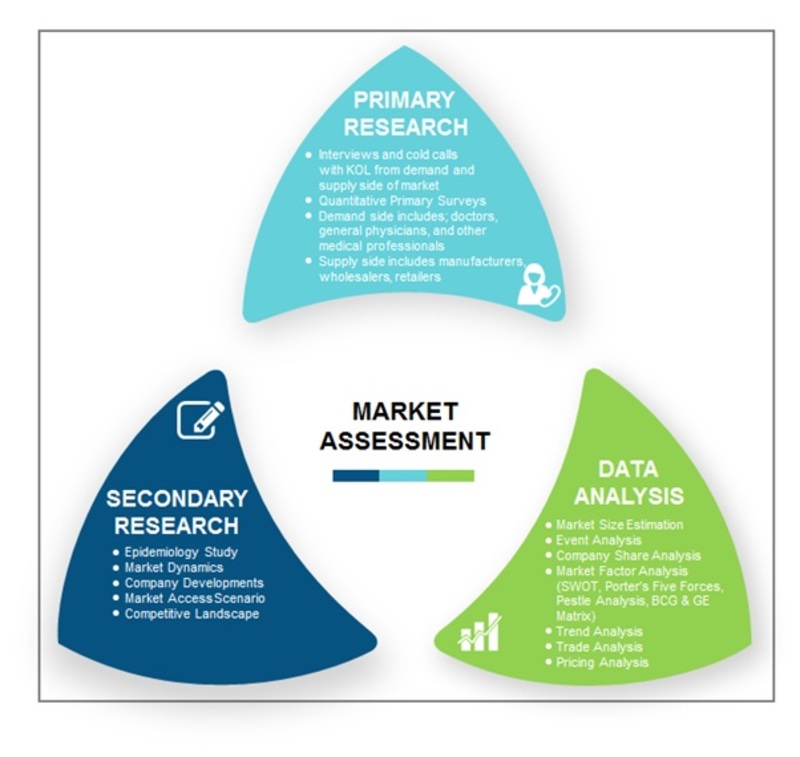
Research methodology of Traditional and Herbal Medicine Market
Traditional and Herbal Medicine Market Regional Analysis
Asia Pacific countries account for the maximum market share due to its high use of traditional and herbal medicine. These Asia Pacific countries are China which is followed by India for its maximum market share value. Europe is the second largest market due to its large income and growing demand for natural therapies and remedies. The Europe market is led by France which is followed by Germany. Asia Pacific countries or region is considered to be the fastest region. The Middle East and Africa countries will be led by the Gulf nation. The poor regions of Africa are a laggard due to poor economic and political conditions.
Scope and Importance of Traditional Medicine
The contribution of the medicinal plants and herbs known by the ancient and rural people is not known to many people and the plants are on the verge of disappearing and vulnerable. The impact of deforestation, modernization and urbanization have led to this vulnerability. Our immediate concern is to preserve this knowledge and share with the future generation. The contribution made by traditional medicine to modern medicine is worth noting and appreciated. Below is the list of plants that are used for the synthesis of the modern drug from the plants after knowing their chemical composition and effectiveness which was used by many rural and ancient people for their primary treatment.
|
Modern drug |
Traditional Medicine use
|
Plant source |
|
Aspirin |
Reduces pain and inflammations |
Filipendula ulmaria |
|
Codeine |
Eases pain, suppresses a cough |
Papaver somniferum |
|
Ipecac |
Controls vomiting |
Psychotria ipecacuanha |
|
Pilocarpine |
Reduces pressure in the eyes |
Pilocarpus jaborandi |
|
Ephidrine |
Reduces nasal congestion |
Ephedra sinica |
|
Quinine |
Combats malaria |
Cinchona pubescens |
|
Reserpine |
Lowers blood pressure |
Rauvolfia serpentina |
|
Scopolamine |
Eases motion sickness |
Datura stramonium |
|
Theophyllin |
Opens bronchial passage |
Catharanthus roseus |
|
Diosgenin |
Contraceptive |
Dioscorea floribunda |
|
Digitoxin |
Dropsy relieves heart congestion |
Digitalis purpurea |
Global herbal medicine market revenue, by product, 2014 - 2024 (USD Billion)

The global value of the plant-derived products is increasing constantly due to its effectiveness and few or no side effects. The tremendous increase in the shift of consumers towards the traditional medicine such as Ayurveda, Homeopathy, Unani, Traditional Chinese medicine has led to the increase in the market value as they are low cost, affordable than compared to allopathy. In addition to this increase in the research and funding will help for the growth of the market in the near future.
Why Attend
Traditional medicine important motive is to cope with the demanding situations in making a more secure, sustainable and low priced gadget for remedy, and fitness through consolidating the underpinning opportunity medicine research platforms. Researcher and understanding who’s in those topics want in-intensity expertise. It’s essential to share know-how with others due to the newly generated hassle. For that, they need a platform to proportion their knowledge. Let’s say we create a golden opportunity for those people to expose their expertise thru this convention. Further to attending the Tradition medicine convention, we invite you to enjoy Dubai, the lovely and famous place in UAE, which pulls human beings from All over the world.
Why Dubai, UAE?
Inferable from cutting edge and inventive ability, assets and foundation, Dubai today has turned into a world-class goal that is a mixture of societies and dynamic goal contributions. Immovably situated as the fourth most visited, and a standout amongst the most cosmopolitan urban communities on the planet, Dubai is genuinely where the east meets west. With its change from a little exchanging port to a flourishing city in a strikingly brief time, Dubai has turned into a thriving example of overcoming adversity. The United Arab Emirates' most crowded city is a mix of striking and aggressive engineering, sunburned hills, and a purplish blue coastline. It is anything but difficult to get to the city, as Dubai is all around served by world-class air terminals, a few ports, and a decision of parkways and transport courses. The key geographic area accompanies a pleasant, direct atmosphere that guarantees blue skies and shoreline climate notwithstanding amid winter months. The city's flourishing business network, its shining nightlife and an interesting society are altogether viewpoints that add to the worldwide interest of Dubai. With a culture surely understood for giving careful consideration to detail, your occasion will be provided food for with care and polished skill.
A thrilling mix of desert city, shopping destination, golfing mecca, and sky scraping business center, Dubai is a prime city for meetings and events in the United Arab Emirates.
- Burj Khalifa
- Dubai Mall
- Dubai Museum
- Bastakia (Old Dubai)
- Sheikh Saeed Al-Maktoum House
- Dubai Creek
- Jumeirah Mosque
- Deira
- Sheikh Zayed Road
- Heritage and Diving Village
- Dubai Aquarium
- Burj al-Arab
- Jumeirah Beach
- Mall of the Emirates
- IMG Worlds of Adventure
- Dubai Opera
- Kite Beach
- Alserkal Art District
- Dubai Parks and Resorts
- Aquaventure Waterpark
- Medical Practitioners
- Sports Medicine Practitioners
- Traditional Medicine Practitioners
- Ayurveda Practitioners
- Homeopathy Practitioners
- Yoga Practitioners
- Acupuncturists
- Herbal Medicine Practitioners
- Naturopathic Physicians
- Natural therapists
- Business/Practice Managers
- Associations, Societies, and Universities
Related Conferences:
1. International Conference on Integrative Medicine and Alternative treatments October 26-27, 2018 Boston, Massachusetts, USA
2. International Conference & Exhibition on Herbal & Traditional Medicine November 5-6, 2018 London, UK
3. International Conference and Exhibition on Traditional & Alternative Medicine November 08- 09, 2018 Auckland, New Zealand
4. International Conference on Frontiers in Alternative & Traditional Medicine November 14-15, 2018 Tokyo, Japan
5. Annual Meeting on Naturopathic Physicians & Acupuncturists November 14-15, 2018 Tokyo, Japan
6. International Conference on Medicinal Practices: Herbal, Holistic and Traditional November 26-27, 2018 Bali, Indonesia
7. International Conference on Herbal & Traditional Medicine December 10-11, 2018 Dubai, UAE
8. International Conference on Chinese Medicine, Ayurveda & Acupuncture March 04-05, 2019 Berlin, Germany
9. International Conference on Holistic Medicine and Nursing Care March 25-26, 2019 Orlando, Florida, USA
10. International Conference and Expo on Acupuncture and Oriental Medicine April 08-09, 2019 Toronto, Canada
11. World Congress on Traditional and Complementary Medicine May 20-22, 2019 Osaka, Japan
12. Global Summit on Herbals and Traditional Medicine August 14-15, 2019 Auckland, New Zealand
Related Societies and Associations
Middle East
1. Association of Traditional Chinese Medicine and Acupuncture, UK
2. European Herbal & Traditional Medicine Practitioners Association
3. British Holistic Medical Association
4. European Ayurveda Association (EUAA)
5. Chinese Herbs and Biotech Development Association, Taiwan
6. Center for Food and Biomolecules, Taiwan
7. Associazione Italiana Agopuntura, Italy
8. Saudi Pharmaceutical Society
9. Emirates Society of Emergency Medicine (ESEM)
10. Homeopathy Associations and Societies
11. Pancyprian Association of Acupuncturists Limited
12. National Acupuncture Detoxification Association
13. National Centre for Complementary and Integrative Health (NCCIH)
14. National Qigong Association
15. Associazione Italiana Agopuntura, Italy
17. Saudi Pharmaceutical Society
18. American Society of Acupuncturists
19. Emirates Society of Emergency Medicine (ESEM)
20. Australian Traditional Medicine Society
USA
2. American Holistic Medical Association
3. International Association of Medical Regulatory Authorities
4. Traditional medicine society
5. World Federation of Chinese medicine societies
6. Acupuncture Society of America
7. Texas Association of Acupuncture & Oriental Medicine
8. American Herbal Products Association
9. American Naturopathic Medical Association
10. North American Society of Homeopaths
11. Swedish homeopathy association
13. Herbalist Association of Nova Scotia
14. National Qigong Association
15. North Carolina Association of Acupuncture and Oriental Medicine
16. American Association of Acupuncture and Oriental medicine
17. American Association of Oriental Medicine
18. Alternative and Integrative Medical Society
19. American Association of Integrative Medicine
20. American Holistic Health Association
21. American Integrative Medical Association
22. American Association of Drugless Practitioners
23. American Association of Naturopathic Doctors
24. American Massage Therapy Association
25. International Association of Classical Homeopathy
26. International Society for Complementary Medicine Research
Europe
1. The Association of Traditional Chinese Medicine and Acupuncture UK
2. British Acupuncture Council (BAC)
3. European Traditional Chinese Medicine Association
4. European Herbal & Traditional Medicine Practitioners Association
5. Association for Medical Education in Europe (AMEE)
6. The Association Of Chinese Medicine & Acupuncture
7. The British Dental Acupuncture Society
8. Acupuncture and Chinese Medicine Organization
9. Association of Master Herbalists
10. Greek Association of Chinese Medicine
11. British Acupuncture Council
12. British Complementary Medicine Association
13. British Herbal Medicine Association
14. British Homeopathic Association
15. British Medical Acupuncture Society
16. European Central Council of Homeopaths
17. European Herbal and Traditional Medicine Practitioner’s Association
18. European Scientific Cooperative on Phototherapy
19. The Association of Traditional Chinese Medicine and Acupuncture UK
20. British Acupuncture Council (BAC)
21. European Traditional Chinese Medicine Association
22. European Herbal & Traditional Medicine Practitioners Association
23. Association for Medical Education in Europe (AMEE)
24. The Association Of Chinese Medicine & Acupuncture
25. The British Dental Acupuncture Society
26. Acupuncture and Chinese Medicine Organization
27. Association of Master Herbalists
28. Greek Association of Chinese Medicine
Asia-Pacific
1. Australian Traditional Medicine Association ATMA
2. Ayush Medical Association of India
3. China Association of Traditional Chinese Medicine
4. Australian Naturopathic Federation
5. Australian Homoeopathic Association
6. International Society for Japanese Kampo Medicine (ISJKM)
7. Malaysian Society for Complementary Medicine
8. Homeopathy Associations and Societies
9. Malaysian Pharmaceutical Society
11. Indian Board of Alternative Medicine
12. China Academy of Chinese Medical Sciences
13. Australian Acupuncture and Chinese Medicine Association
14. Australian Traditional Medicine Society
15. Association of Natural Medicines
16. Chinese Society of Plant Biology (CSPB)
17. Crop Science Society of China (CSSC)
18. Genetics Society of China (GSC)
19. Indian Society of Plant Physiology (ISPP)
20. Japanese Society for Plant Cell and Molecular Biology (JSPCMB)
Overview of Integrative, Complementary &Alternative Medicine
- Complementary medicine refers to non-mainstream practices used together with conventional medicine.
- Alternative medicine refers to non-mainstream practices used instead of conventional medicine.
- Integrative medicine is health care that uses all appropriate therapeutic approaches—conventional and non-mainstream—within a framework that focuses on health, the therapeutic relationship, and the whole person.
Some CAM therapies are now offered in hospitals and are sometimes reimbursed by insurance companies. Some traditional medical schools, including 74 North American medical institutions in the Academic Consortium for Integrative Medicine and Health, provide education about integrative medicine and therapies.
Lovely Lavender
Lavender
Lavendula Officinalis and related species
Family: Labiatae
Parts used: flowers and leaves
Lavender is one of my favorite herbs for nerve stress and tension. It has a special affinity with women’s spirit. Often thought of as a delicate ornamental, lavender is not only beautiful and aromatic but pungent and powerful. Native to the Mediterranean, where it grows wild on sun-drenched hills, it has traveled far and wide and has taken up residence in gardens everywhere.
Lavender has long been valued for its ability to bring courage and strength to the user. Traditionally, sprigs of lavender were tied in bundles and placed in the hands of women in labor. Squeezing the fragrant bundles was believed to give them added strength and courage during childbirth. Lavender has long been used to calm nervous stress and is especially useful during menopause and menstrual difficulties. During the Middle Ages, it was a valued remedy for hysteria. It can be very healing to women undergoing their periods of intense stress to place sprigs of lavender and lavender oil in the rooms of their home. Its essence brings calmness and inner strength to the user.
What is an Akashic Records Reading?
Conference Highlights
- Medicinal Plant and Products
- About Traditional Medicines and Disciplines
- Phytochemistry and Traditional Medicines
- Indigenous and Tribal Medicines
- Unani Medicines
- Ayurveda
- Homeopathy
- Naturopathy
- Siddha Medicine
- Acupuncture
- Chinese Traditional Medicines
- Chiropractic and Osteopathic Medicine
- Yoga & Meditation
- Uses of Traditional Medicine For AIDS
- Pharmacognosy and Phytotherapy
- Traditional Korean Medicine
- Future of Traditional Medicine
- Neutraceuticals and Herbal Cosmetics
- Ethnopharmacology
- Aspects of Complementary Medicines
- Disciplines of Nursing in the field of Allopathy Homeopathy and Ayurveda
- Sports Medicine
To share your views and research, please click here to register for the Conference.
To Collaborate Scientific Professionals around the World
| Conference Date | June 20-21, 2019 | ||
| Sponsors & Exhibitors |
|
||
| Speaker Opportunity Closed | Day 1 | Day 2 | |
| Poster Opportunity Closed | Click Here to View | ||
Useful Links
Special Issues
All accepted abstracts will be published in respective Our International Journals.
- Herbal Medicine : Open Access
- Journal of Alternative,Complementary & Integrative Medicine
- Medicinal & Aromatic Plants
Abstracts will be provided with Digital Object Identifier by









